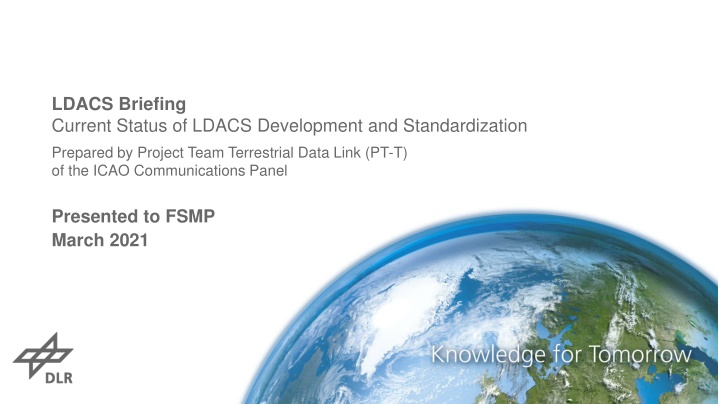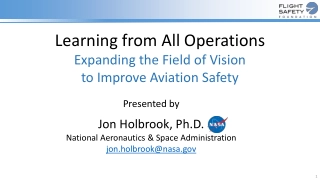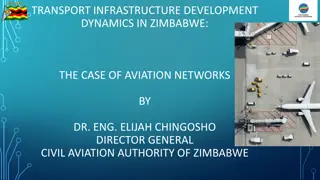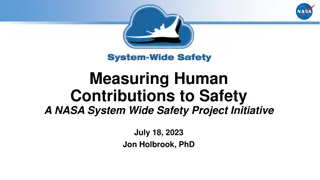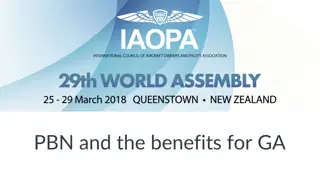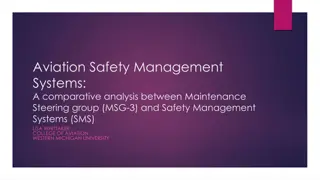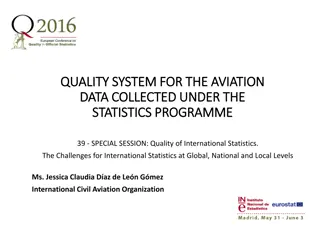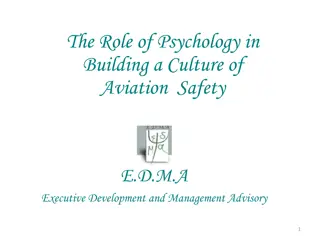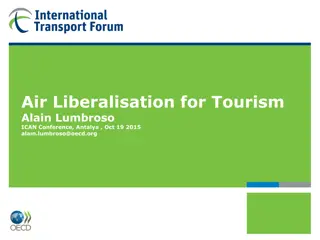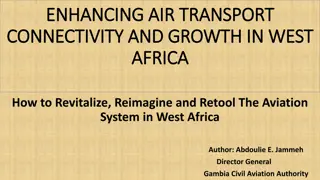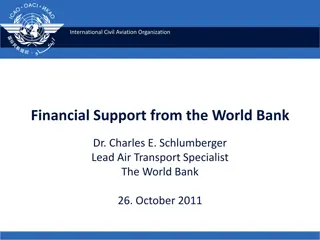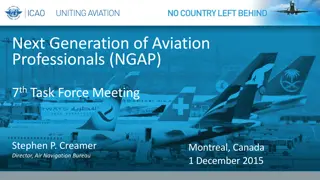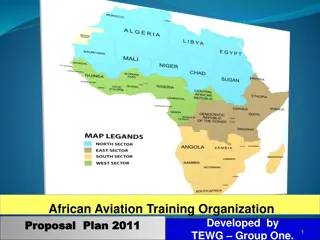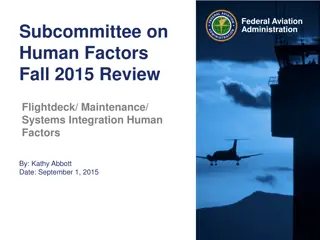LDACS: Advancing Aviation Communication Technology
LDACS, a broadband and secure terrestrial communications system for aviation, is a mature technology designed for enhanced efficiency, safety, and capacity in air transportation. Developed under EUROCONTROL and refined within SESAR, LDACS offers state-of-the-art features like OFDM modulation and high data rates, positioning it as a critical component in modernizing CNS technologies for the future of global air navigation. Flight trials have confirmed its potential, making LDACS a key player in the aviation industry's drive for improved connectivity and performance.
Download Presentation

Please find below an Image/Link to download the presentation.
The content on the website is provided AS IS for your information and personal use only. It may not be sold, licensed, or shared on other websites without obtaining consent from the author.If you encounter any issues during the download, it is possible that the publisher has removed the file from their server.
You are allowed to download the files provided on this website for personal or commercial use, subject to the condition that they are used lawfully. All files are the property of their respective owners.
The content on the website is provided AS IS for your information and personal use only. It may not be sold, licensed, or shared on other websites without obtaining consent from the author.
E N D
Presentation Transcript
LDACS Briefing Current Status of LDACS Development and Standardization Prepared by Project Team Terrestrial Data Link (PT-T) of the ICAO Communications Panel Presented to FSMP March 2021
DLR.de Chart 2 Motivation Worldwide ATM modernization For increased efficiency Reduce overall ATM costs For increased safety and security Stay number one in safety, harden against cyber attacks For increased capacity Overcome airspace capacity challenge For greener air transportation Higher and continuing public acceptance Requires modernization of CNS technologies, especially improved and secure connectivity.
DLR.de Chart 3 Outline What is LDACS? What does LDACS offer? How will LDACS be deployed? What is the current status of LDACS?
DLR.de Chart 4 What is LDACS? LDACS stands for L-band Digital Aeronautical Communications System and is the upcoming broadband and secure terrestrial communications system for aviation originally developed under EUROCONTROL contract and being refined within SESAR 2020 exclusively designed for aviation use in protected aeronautical L-band with AM(R)S allocation well positioned in SESAR s ATM Master Plan and essential part of the FCI well reflected in ICAO s Global Air Navigation Plan under ICAO standardization (Communications Panel) The Future Communications Infrastructure (FCI) SatCom LDACS A2A LDACS LDACS is a mature technology for aviation! Flight trials have taken place March/April 2019 LDACS AeroMACS
DLR.de Chart 5 What is LDACS? LDACS System Characteristics State-of-the-art technology as used in LTE/4G Based on OFDM modulation technology Orthogonal Frequency-Division Multiplexing Multi-carrier technology Modern, highly flexible and scalable Main LDACS Parameters: Number of subcarriers 64 (50 used) Efficient coding and adaptive coding/modulation Covers QPSK, 16-QAM, 64-QAM Concatenated coding scheme using combination of Reed Solomon and convolutional code Interleaving Bandwidth 625 / 488 kHz Subcarrier spacing 9,765625 kHz OFDM symbol duration 102,4 s Guard interval (4,8 + 12,8) s Net data rate (at least 50-times VDL Mode 2 capacity) 550 kbit/s 2,6 Mbit/s
DLR.de Chart 6 What is LDACS? LDACS System Characteristics LDACS inlay approach: Deployment in L-band among DME channels Ensuring the right frequency separation and geographic distance Suppression of out-of-band radiation towards other L-band systems Mitigation of L-band interference from other L-band systems Cellular communications concept Apply FDD due to limited bandwidth available with inlay approach Forward Link: 1110 1125 (1156) MHz Reverse Link: 964 979 (1010) MHz
DLR.de Chart 7 What does LDACS offer? A variety of useful features and capabilities Broadband Connectivity to enable modern ATM concepts LDACS is based on technology as applied for LTE/4G mobile radio systems High-rate data communications with 550 kbps 2.6 Mbps per channel (55 260 times VDL2) Improved communications performance to overcome current deficiencies LDACS provides both data link connectivity and digital voice Low-latency transmission through coordinated channel access Service priorities ensure low-latency and high continuity of service for safety-critical ATS and AOC No co-channel interference problems as experienced during VDL2 data link deployment Secure transmissions through built-in cyber-security means Ensuring mutual entity authentication Protecting confidentiality, integrity and authenticity of messages Ensuring availability and continuity of service
DLR.de Chart 8 What does LDACS offer? A variety of useful features and capabilities Simultaneous transmission of ATS and AOC services Each service transmits according to its priority suitable for the service requirements Transmission of high-volume AOC data while ensuring immediate access for safety-critical services LDACS covers ATN/B1 and ATS/B2 as well as emerging ATS/B3 and additional future services including full 4D TBO, flight-centric ATM, secure connectivity to the flight deck, and secure GBAS Integrated CNS Communications for ATS and AOC services main task Navigation/positioning through ranging to ground stations providing enhanced APNT capabilities Surveillance through detection of airborne LDACS transmissions at ground stations Potential extensions under current consideration Extension towards direct air-air communications (LDACS A2A) Extension towards Command & Control link for single-piloted aircraft or RPAS
DLR.de Chart 9 What does LDACS offer? Special benefits for airlines LDACS enables improved and secure aircraft connectivity High-volume, secure AOC and ATS communications for improved operational efficiency Secure, private communications for aircraft operators including AOC VoIP connections to aircraft LDACS enables modern ATM procedures increased airspace capacity, reduced delays and costs Full 4D trajectory-based operations and flight-centric ATM for increased airspace capacity and safety Air-traffic becomes more predictable and is handled more efficiently, improving punctuality and costs Less detours and waiting times/patterns reduce fuel burn LDACS assists transformation towards greener aviation Modern ATM procedures result in reduced fuel burn Noise optimized routes over populated areas reduce noise foot prints and increase public acceptance
DLR.de Chart 10 How will LDACS be deployed? With a valid business case for airlines/airframers Main guideline: Re-use existing infrastructure on-board and on ground as far as possible to reduce costs Re-use avionics installation Bring LDACS on-board without additional antenna or avionics box Develop combined VDL/LDACS radio in a single avionics box Exchange VHF antenna with a combined VHF-/L-band antenna having the same footprint Advantages Almost one-to-one exchange of VDL with combined VDL/LDACS radio Reduced aircraft downtimes and reduced installation costs Gradual introduction of LDACS possible starting where broadband connectivity is needed most Aircraft can use LDACS wherever deployed on ground, otherwise VDL is used Use and return of investment starts with the first LDACS ground installation
DLR.de Chart 11 How will LDACS be deployed? With a valid business case for CSPs/ANSPs Main guideline: Re-use existing infrastructure on-board and on ground as far as possible to reduce costs Re-use existing ground infrastructure Coverage area of a single LDACS ground station is comparable to VDL coverage Advantages Ground station installations can be re-used Network infrastructure can be re-used Re-use existing service infrastructure CSPs can offer a broadband service where available as complement to the VDL service Advantages CSPs can use their infrastructure and client base Seamless introduction of a broadband service to airlines (AOC) and ANSPs (ATS)
DLR.de Chart 12 What is the current status of LDACS? LDACS is well established and under ICAO standardization LDACS design is completed and technical specifications are available and published Demonstrator equipment has been produced by Frequentis, Rohde & Schwarz, and Leonardo Flight trials using industrial demonstrator equipment have been performed in March/April 2019 Four LDACS ground stations and one LDACS airborne installation LDACS functionalities and capabilities have been demonstrated in realistic scenarios LDACS is well established in ICAO s Global Air Navigation Plan (GANP) SESAR s ATM Master Plan Eurocontrol s future communications infrastructure (FCI) ICAO standardization was initiated in October 2016 LDACS Draft SARPs have been endorsed by the Communications Panel in October 2018 Work on SARPs Validation and LDACS Manual is ongoing The aim is to have an applicable standard from 2024 onwards
DLR.de Chart 13 What is the current status of LDACS? Timeline towards LDACS applicability Development of LDACS Manual Guidance Material Validation Document Update of SARPs Validation of SARPs Applicability 2019 2022 2024 2020 2021 2023 Q3/2022
DLR.de Chart 14 Thank you for your attendance! Contact details: Michael.Schnell@dlr.de For more information, see: www.ldacs.com
